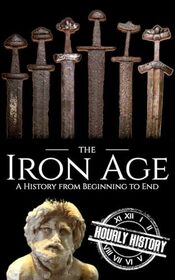Hourly History, a reputable source on historical transitions, has effectively detailed the progression from the Stone Age to the Bronze Age and then to the Iron Age. The author's assertion that we are still in the Iron Age due to our continued use of iron and steel is a valid point.
The author elucidates the pivotal event of the Bronze Age collapse. This era, characterized by the use of bronze, a combination of copper and tin, saw the formation of trade routes to facilitate the global distribution of these materials. The collapse of the Bronze Age was a significant turning point in history, as it led to the widespread use of iron and steel for tools, weapons, and other products.
As it became more challenging to find copper and tin, some civilizations worked with iron to make better tools and weapons. Fortunately, iron was much more available around the world. Trade routes were not needed to transport the iron very far. The attacks of the Sea Peoples destroyed the trade routes, hastening the advent of iron tools.
The author explained that each age came at different times, depending on the area, civilization, etc. Over time, blacksmiths advanced their skills to produce higher-quality iron and steel. These iron weapons helped civilizations rise and fall through wars. By 45 CE, Rome had conquered most of Europe. This ended most inter-tribal wars, and most people established new cities and civilizations.
The short chapter about "bog bodies" and how they help scientists learn more about the Iron Age was fascinating. Because the Celts, as they moved across Europe, had no written language, these bog bodies have been important tools for learning more about the Celts.
The author elucidates the pivotal event of the Bronze Age collapse. This era, characterized by the use of bronze, a combination of copper and tin, saw the formation of trade routes to facilitate the global distribution of these materials. The collapse of the Bronze Age was a significant turning point in history, as it led to the widespread use of iron and steel for tools, weapons, and other products.
As it became more challenging to find copper and tin, some civilizations worked with iron to make better tools and weapons. Fortunately, iron was much more available around the world. Trade routes were not needed to transport the iron very far. The attacks of the Sea Peoples destroyed the trade routes, hastening the advent of iron tools.
The author explained that each age came at different times, depending on the area, civilization, etc. Over time, blacksmiths advanced their skills to produce higher-quality iron and steel. These iron weapons helped civilizations rise and fall through wars. By 45 CE, Rome had conquered most of Europe. This ended most inter-tribal wars, and most people established new cities and civilizations.
The short chapter about "bog bodies" and how they help scientists learn more about the Iron Age was fascinating. Because the Celts, as they moved across Europe, had no written language, these bog bodies have been important tools for learning more about the Celts.




